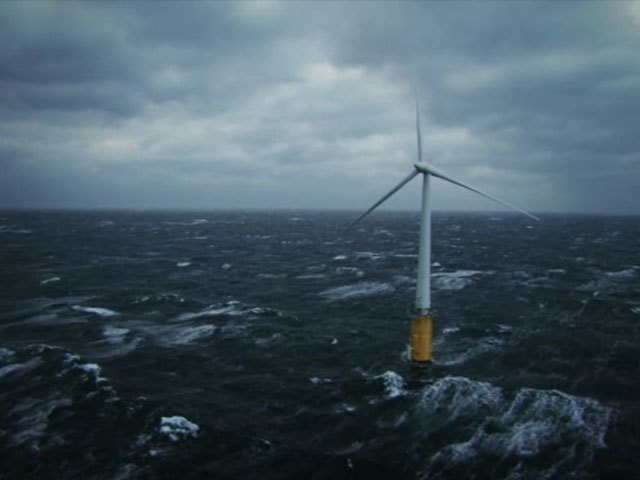
Oil giant Statoil will use its Peterhead offshore windfarm plans to search for a green energy first – turbines that can survive without government subsidies.
The Buchan Deep scheme, part of the Norwegian firm’s Hywind initiative, would feature five floating turbines about 13 nautical miles from the port.
The plans were unveiled to locals last week – and last night project boss Torgeir Nakken said it could have far-reaching implications for the wind market.
The structures are being developed for deep water areas, away from the sight – and opposition – of those living on the coast.
And for the first time they could operate without any public money, another bone of contention with the public. “The ultimate goal is for these structures to survive without any subsidies, otherwise it is not sustainable,” said Mr Nakken.
“We are planning five of the biggest turbines available at the moment, which is 6MW. Time will tell whether this is the future for offshore wind, but we believe there is a market for deep water turbines because there is a lot more deep water than shallow water around the world, especially around Scotland.
“We are looking to utilise these areas. The water off Peterhead is 100metres (330ft), but we are thinking this could work at depths of up to 800metres (2,640ft).”
The company has had one Hywind turbine in operation for four years in Norway, but the Peterhead scheme is about taking that further. It’s proven technology, but the next step towards a large commercial scheme is this,” he said.
“It has never been done in a park before, so this will be the world’s first floating wind park. We need to see how the movement of one affects the other.
“They will be huge structures. The one in Norway is 2.3MW, but this is 6MW and will be two or three times the weight. In total, with the substructure, each of these will weigh nearly 1,000 tonnes.”
Statoil says it has picked Peterhead “because of the commercial framework” and because the town has deep water close to shore.
The structures, which would be anchored to the seabed, have the potential to generate more than enough electricity to power Peterhead, which has a population of 18,500.
Cables would be laid to connect the turbines to the National Grid at the town’s Grange substation.
If the technology can be proven, Statoil hope to roll it out at deep water sites across Scotland and the rest of the world.
“There are several areas with deep water and good wind resources (around Scotland), but it is up to the Crown Estate where you can develop such resources,” Mr Nakken said.
“Both east and west coast of America have potential deep water sites, and Japan also.”
For the Peterhead test to go ahead, Statoil needs a marine licence from the Scottish Government, as well as planning permission from Aberdeenshire Council for onshore work in Peterhead.
Once that is in place, Statoil bosses will make a final investment decision on the scheme, in 2015.
All going well, it will be built in 2017 and remain in place for 20 years.
Recommended for you
